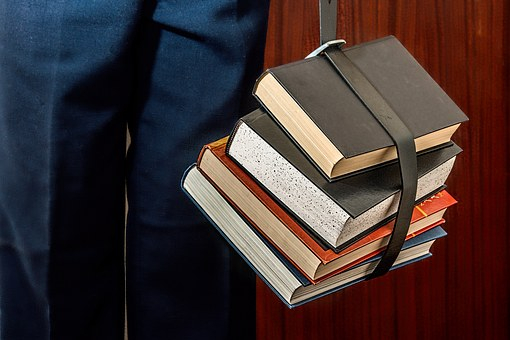怎么让招生官爱上你的文书?这里分享三篇哈佛大学公开的优秀文书,供大家参考,希望给大家带来新的灵感。

1、亚裔Bobby
ESSAY正文
Bold white rafters ran overhead, bearing upon their great iron shoulders the weight of the skylight above. Late evening rays streamed through these sprawling glass panes, casting a gentle glow upon all that they graced—paper and canvases and paintbrushes alike. As day became night, the soft luminescence of the art studio gave way to a fluorescent glare, defining the clean rectilinear lines of Dillon Art Center against the encroaching darkness. It was a studio like no other. Modern. Sophisticated. Professional.
And it was clean and white and nice.
But it just wasn't it.
Because to me, there was only one "it," and "it" was a little less than two thousand miles west, an unassuming little office building located amidst a cluster of similarly unassuming little office buildings, distinguishable from one another on the outside only by the rusted numbers nailed to each door. Inside, crude photocopies of students' artwork plastered the once white walls. Those few openings in between the tapestry of art were dotted with grubby little handprints, repurposed by some overzealous young artist as another surface for creative expression. In the middle of the room lay two long tables, each covered with newspaper, upon which were scattered dried-up markers and lost erasers and bins of unwanted colored pencils. These were for the younger children. The older artists—myself included—sat around these tables with easels, in whatever space the limited confines of the studio allowed. The instructor sometimes talked, and we sometimes listened. Most of the time, though, it was just us—children, drawing and talking and laughing and sweating in the cluttered and overheated mess of an art studio.
No, it was not so clean and not so white and not so nice. But I have drawn—rather, lived—in this studio for most of my past ten years. I suppose this is strange, as the rest of my life can best be characterized by everything the studio is not: cleanliness and order and structure. But then again, the studio was like nothing else in my life, beyond anything in which I've ever felt comfortable or at ease.
Sure, I was frustrated at first. My carefully composed sketchbooks—the proportions just right, the contrast perfected, the whiteness of the background meticulously preserved—were often marred by the frenzied strokes of my instructor's charcoal as he tried to teach me not to draw accurately, but passionately. I hated it. But thus was the fundamental gap in my artistic understanding—the difference between the surface realities that I wanted to depict, and the profound though elusive truths of the human condition that art could explore. It was the difference between drawing a man's face and using abstraction to explore his soul.
And I can't tell you exactly when or why my attitude changed, but eventually my own lines began to unabashedly disregard the rules of depth or tonality to which I had once dutifully adhered, my fervor leaving in its wake black fingerprints and smudges where once had existed unsoiled whiteness. It was in this studio that I eventually made the leap into a new realm of art—a realm in which I was neither experienced nor comfortable. Apart from surface manifestations altogether, this realm was simultaneously one of austere simplicity and aesthetic intricacy, of departure from realism and immersion in reality, of intense emotion and uninhibited expression. It was the realm of lines that could tell stories, of colors and figures that meant nothing and everything.
Indeed, it was the realm of disorder and messy studios and true art—a place where I could express the world like I saw it, in colors and strokes unrestrained by expectations or rules; a place where I could find refuge in the contours of my own chaotic lines; a place that was neither beautiful nor ideal, but real.
No, it was not so clean and not so white and not so nice.
But then again, neither is art.
点评:文章最突出的是意象组合,运用“Late evening rays ...casting a gentle glow”,“the soft luminescence of the art studio...a fluorescent glare”将读者迅速带入作品,立马领会文章主题:艺术。这篇文章最吸引人的地方在于它是一个成长的故事,记录了Bobby从孩童到青少年的成长,艺术创作也从有序、浅显走向抽象、深刻。
2、保加利亚的Jessica
ESSAY正文
As a child raised on two continents, my life has been defined by the “What if…?” question. What if I had actually been born in the United States? What if my parents had not won that Green card? What if we had stayed in the USA and had not come back to Bulgaria? These are the questions whose answers I will never know (unless, of course, they invent a time machine by 2050).
“Born in Bulgaria, lived in California, currently lives in Bulgaria” is what I always write in the About Me section of an Internet profile. Hidden behind that short statement is my journey of discovering where I belong.
My parents moved to the United States when I was two years old. For the next four years it was my home country. I was an American. I fell in love with Dr. Seuss books and the PBS Kids TV channel, Twizzlers and pepperoni, Halloweens and Thanksgivings the yellow school bus and the “Good job!” stickers.
It took just one day for all of that to disappear. When my mother said “We are moving back to Bulgaria,” I naively asked, “Is that a town or a state?”
Twenty hours later I was standing in the middle of an empty room, which itself was in the middle of an unknown country.
It was then that the “what if” — my newly imagined adversary—made its first appearance. It began to follow me on my way to school. It sat right behind me in class. No matter what I was doing, I could sense its ubiquitous presence.
The “what if” slowly took its time over the years. Just when it seemed to have faded away, it reappeared resuming its tormenting influence on me—a constant reminder of all that could have been. What if I had won that national competition in the United States? What if I joined a Florida tennis club? What if I became a part of an American non-governmental organization? Would I value my achievements more if I had continued riding that yellow school bus every morning?
But something—at first unforeseen and vastly unappreciated—gradually worked its way into my heart and mind loosening the tight grip of the “what if”—Bulgaria. I rediscovered my home country—hours spent in the library reading about Bulgaria’s history spreading over fourteen centuries, days reading books and comparing the Glagolitic and Cyrillic scripts, years traveling to some of the most remote corners of my country. It was a cathartic experience and with it finally came the discovery and acceptance of who I am.
I no longer feel the need to decide where I belong. I am like a football fan that roots for both teams during the game. (If John Isner ever plays a tennis match against Grigor Dimitrov, I will definitely be like that fan.) Bulgaria and the USA are not mutually exclusive. Instead, they complement each other in me, whether it be through incorporating English words in my daily speech, eating my American pancakes with Bulgarian white brine cheese, or still having difficulty communicating through gestures (we Bulgarians are notoriously famous for shaking our heads side to side when we mean “yes” and nodding to mean “no).
As a child raised on two continents, my life will be defined by the “What…?” question. What have Bulgaria and the USA given me? What can I give them back? What does the future hold for me? This time, I will not need a time machine to find the answers I am seeking.
点评:美国 VS 保加利亚,学者 VS 网球运动员……Jessica阐述了自己关于“身份认同”的心理变化,这是一篇“将潜在困难转变为积极因素”的典型大学Essay,面对生活中的“what if假设”,从起初的懊恼,到后面的转变心态,用“重新发现”来积极应对。
3、亚裔Phillip
ESSAY正文
The summer after my freshman year, I found myself in an old classroom holding a blue dry erase-marker, realizing what should have been obvious: I had no idea how to be a teacher. As an active speech and debate competitor, I was chosen as a volunteer instructor for an elementary public speaking camp hosted by my high school. For the first time, I would have the opportunity to experience the classroom from the other side of the teacher’s desk. My responsibility was simple: in two weeks, take sixteen fifth graders and turn them into confident, persuasive speakers.
I walked into class the first morning, enthusiastically looking forward to the opportunity to share my knowledge, experiences, and stories. I was hoping for motivated kids, eager to learn, attentive to my every word.
I was on the other side of the teacher’s desk, but I hadn’t stopped learning. Each day, I was learning how to communicate more effectively, how to deal with new challenges and circumstances, and how to be a better teacher. I once thought that being an adult meant knowing all the answers. But in reality, adults, even teachers, constantly have more to learn. I made the transition away from being a child during those weeks, but I did not and would not transition away from being a learner.
When class ended each afternoon, I would cap my blue dry-erase marker, give high-fives to the students as they walked out the door, and watch as their parents picked them up. I was confident that when my students were asked the inevitable questions of “Did you learn something today?” and “Did you have fun?” their answers would be a resounding yes. And even as their teacher, I learned and had fun too.
Instead, I got Spencer, who thought class was a good time to train his basketball skills by tossing crumpled speeches into the trash can from afar. I got Monica, who refused to speak, and I got James, who didn’t understand the difference between “voice projection” and “screaming.” I got London, who enjoyed doodling on her desk with permanent marker, and I got Arnav, who thought I wouldn’t notice him playing Angry Birds all day. The only questions I got were “When’s lunch break?” and “Why are you giving us homework?” and the only time I got my students to raise their hands was when I asked “How many of you are only here because your parents forced you to?”
Just ten minutes into class, two things hit me: Spencer’s crumpled paper ball, and the realization that teaching was hard.
When I was younger, I thought that a good teacher was one that gave high-fives after class. Later, of course, I knew it was far more complicated than that. I thought about teachers I admired and their memorable qualities. They were knowledgeable, enthusiastic, and inspiring. Their classes were always fun, and they always taught me something.
There was plenty I wanted to teach, from metaphors to logical fallacies. But most importantly, I wanted my students to enjoy public speaking, to love giving speeches as much as I did. And that’s when I realized the most important quality of my favorite teachers: passion. They loved their subject and passed that love on to their students. While it wouldn’t be easy, I wanted to do the same.
Every day for two weeks, I searched for creative ways to inspire and teach my students. I helped London speak on her love for art; I had Arnav debate about cell phone policies in schools. And by the end of the camp, I realized that my sixteen students all saw me not as a high school student, but as a teacher. I took their questions, shared my enthusiasm, and by the time camp was over, they weren’t just learning, but enjoying learning.
点评:这篇essay主题是经过慎重考虑的:作者没有用华丽的功绩让我们眼花缭乱,也没想着炫耀取得成就的广度和深度。相反,选择了一个简单的小故事,依靠在公共演讲训练营与孩子们一起工作的经历,突显个人成长。此外,Phillip的文章自信且清晰,他是在讲故事,而不是炫耀吹牛。
这些文书,没有华丽辞藻,但每篇都有自己的个性,都告诉招生官你是一个怎样的人。
很多中国学生喜欢堆砌辞藻,展示自己“完美”的履历,以为这种文书一定很棒。但是很多时候,你以为了不起的文书可能根本不出挑。








